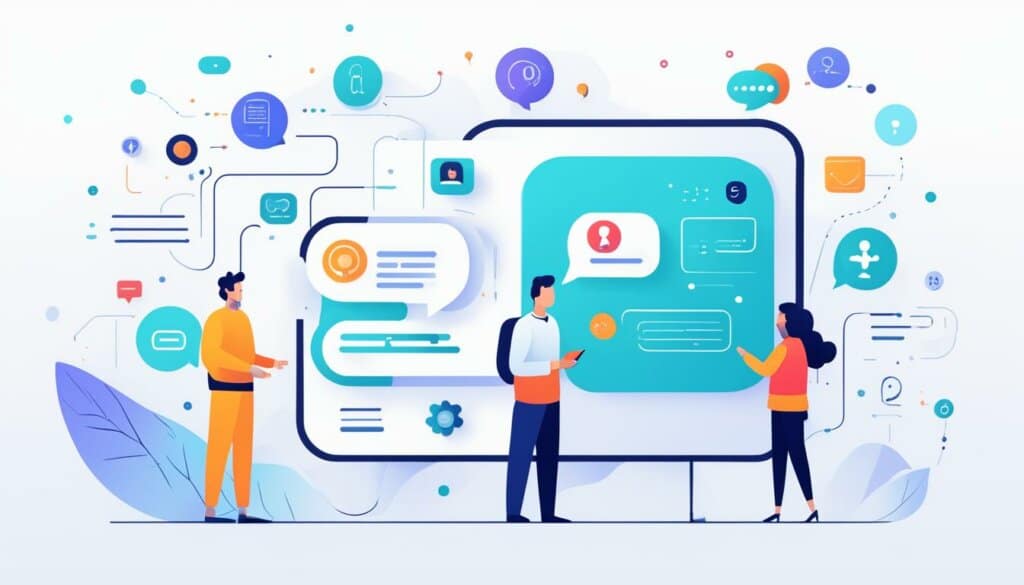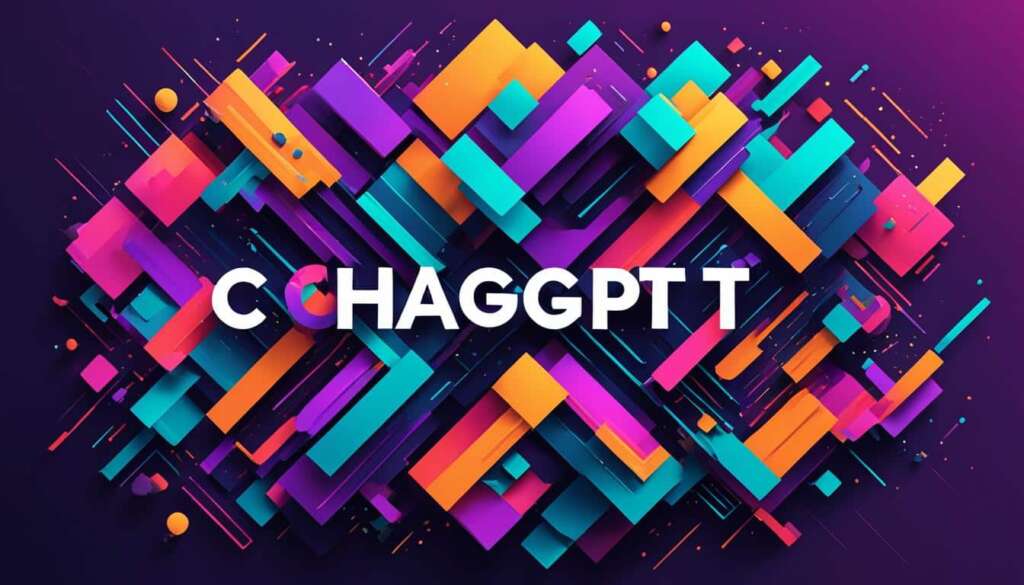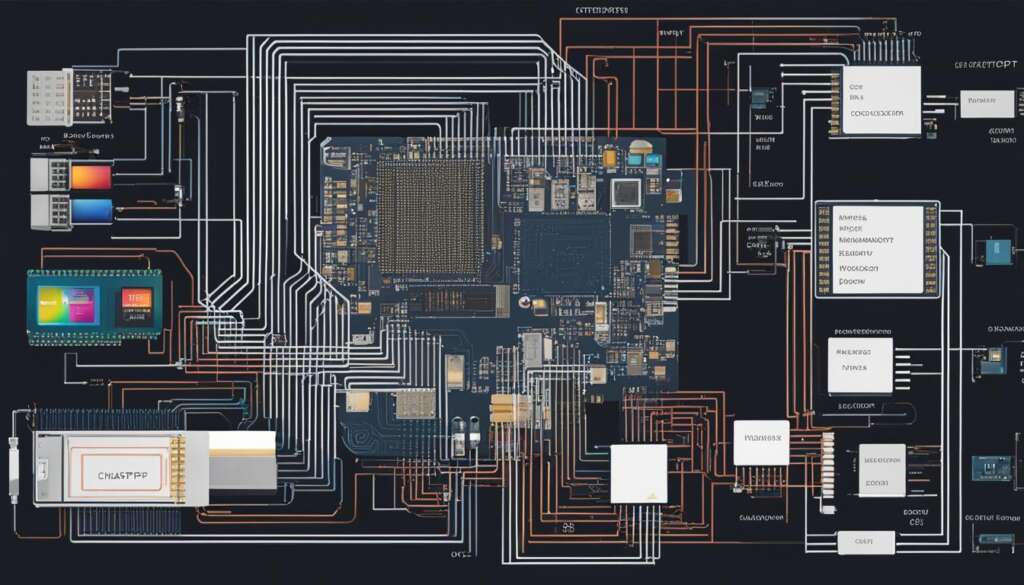Table of Contents
In today’s digital age, artificial intelligence (AI) has revolutionized various industries, and one significant advancement in this field is the development of conversational AI. One notable AI language model that has garnered attention is ChatGPT, a powerful tool for generating human-like conversational dialogue. But what does “ChatGPT” actually stand for? Let’s delve into the details of this fascinating language model.
ChatGPT is an abbreviation for “Generative Pre-trained Transformer.” The term “Generative” refers to its ability to generate text based on input prompts, making it a versatile language model for various textual tasks. “Pre-trained” means that ChatGPT was trained on a vast amount of text data before its release, allowing it to have a broad understanding of language. Lastly, “Transformer” refers to the neural network architecture used in ChatGPT, which allows it to process and generate text in a highly efficient and accurate manner.
As an AI chatbot, ChatGPT utilizes natural language processing (NLP) techniques to engage in interactive conversations with users. It has been developed by the renowned research company OpenAI, known for its cutting-edge AI technologies. With its advanced capabilities, ChatGPT is poised to transform the way we interact with conversational AI and harness the power of artificial intelligence to enhance various applications.
Through its revolutionary transformer model, ChatGPT offers a new level of conversational prowess, making it highly valuable for applications such as chatbots, language models, and AI-based conversation systems. Its ability to decipher and generate text based on user input prompts has made it a go-to tool for automating tasks, content generation, problem-solving, and much more.
In the following sections, we will explore the creation process of ChatGPT, understand how it works, delve into its applications, and uncover its benefits and limitations. We will also dive into the ethical concerns associated with this powerful language model. So, stay tuned to discover the world of ChatGPT and its implications for the future of AI and conversational experiences.
The Creation of ChatGPT
ChatGPT, the revolutionary AI chatbot developed by OpenAI, was created by a team of visionary entrepreneurs and researchers. Founded in 2015, OpenAI boasts prominent creators such as Elon Musk and Sam Altman. This renowned artificial intelligence research company has been at the forefront of innovation in the field. In addition to ChatGPT, OpenAI has developed other groundbreaking AI technologies, including Dall-E, an AI text-to-art generator.
Since its launch in November 2022, ChatGPT has quickly gained widespread acclaim and recognition for its advanced conversational capabilities. By utilizing natural language processing and the power of the Generative Pre-trained Transformer (GPT) technology, ChatGPT has pushed the boundaries of what is possible in the realm of AI chatbots, providing users with human-like interactions and intelligent responses.
In the image above, you can see some of the creators involved in the development of OpenAI and ChatGPT, including Elon Musk and Sam Altman.
How Does ChatGPT Work?
ChatGPT operates on the principle of the Generative Pre-trained Transformer (GPT) architecture, leveraging the power of deep learning techniques to process input prompts and produce text that closely resembles human language. Initially based on the GPT-3 large language model, ChatGPT has undergone further advancements, incorporating the GPT-3.5 and GPT-4 models. These models undergo reinforcement learning, which involves incorporating feedback from human trainers to enhance the accuracy and quality of generated responses.
In its operation, ChatGPT utilizes transformer neural networks, a type of deep learning architecture that has revolutionized the field of natural language processing. These networks assess patterns and dependencies within its training data, enabling the model to predict and generate text that aligns with the desired output.
Let’s take a closer look at the process:
1. Input Prompt: Users provide ChatGPT with an input prompt, which can be a question, a sentence, or a short piece of text. This prompt serves as the foundation for the generated response.
2. Training Data: ChatGPT has been trained on a vast amount of data, including internet text, books, articles, and other sources. This extensive training enables the model to be well-versed in various topics and language patterns.
3. Text Generation: Based on the input prompt and the patterns it has learned from the training data, ChatGPT generates a response that is relevant and coherent.
4. Feedback Loop: To continually improve the model’s performance, OpenAI gathers feedback from human trainers. These trainers review and rate the quality of generated responses, helping to refine and enhance the model’s capabilities over time.
ChatGPT’s ability to understand and generate human-like text makes it a powerful tool for a wide range of applications, from chatbots to language translation and even creative writing assistance.
As illustrated in the image above, ChatGPT’s functioning relies on the intricate interplay between various components, such as the input prompt, the GPT models, and the transformer neural networks. This holistic approach ensures that ChatGPT delivers responses that are not only accurate but also contextually relevant.
Applications of ChatGPT
ChatGPT, with its advanced language processing capabilities, offers a wide range of applications, making it an indispensable tool for various tasks. Whether you need help with code writing, content generation, email drafting, or social media scripting, ChatGPT has got you covered. Let’s explore some of the key applications of ChatGPT:
- Code Writing and Debugging: Whether you’re a seasoned developer or just starting, ChatGPT can assist you in writing and debugging code. Simply provide the necessary information or describe the problem you’re facing, and ChatGPT will generate suggestions and solutions to streamline your coding process.
- Content Generation: Writing compelling articles, blog posts, or website content can be time-consuming. ChatGPT can help you generate high-quality content by providing ideas, structuring paragraphs, and even suggesting relevant keywords.
- Email Drafting: Crafting professional emails can be a challenge. ChatGPT can assist you in composing well-written emails by offering suggestions for subject lines, greetings, body content, and closing remarks.
- Social Media Scripting: Engaging social media content is crucial for building an online presence. ChatGPT can help you create captivating social media posts and scripts tailored to different platforms, capturing your audience’s attention.
- Problem-Solving: When faced with complex problems, ChatGPT can offer valuable insights and suggestions to guide you towards solutions. It can analyze your problem statement, provide relevant information, and help you brainstorm possible approaches.
- SEO Optimization: Generating keyword-rich content is vital for improving your website’s search engine ranking. ChatGPT can assist you with SEO optimization by suggesting target keywords, optimizing meta tags, and providing content that aligns with search engine algorithms.
- Language Translation: Breaking down language barriers, ChatGPT can facilitate language translation tasks. From translating a single phrase to assisting with entire documents, ChatGPT ensures accurate and reliable translations.
- Research Assistance: Conducting research requires thoroughness and attention to detail. ChatGPT can aid in your research tasks by providing relevant information, summarizing articles, and suggesting sources for further exploration.
- Virtual Tutoring: Learning complex topics can be challenging, but ChatGPT can act as a virtual tutor. Whether it’s math, science, literature, or any other subject, ChatGPT can provide explanations, examples, and even practice problems to enhance your understanding.
No matter the task at hand, ChatGPT is a reliable assistant that simplifies your workload, boosts your productivity, and ensures efficient outcomes.
“ChatGPT serves as a versatile tool, assisting users with code writing, content generation, problem-solving, research assistance, and virtual tutoring. Its applications extend to social media scripting, email drafting, language translation, and SEO optimization, making it a must-have for individuals and businesses.”
With ChatGPT by your side, you can leverage the power of AI to accomplish tasks with ease and efficiency.

Benefits of ChatGPT
ChatGPT offers several benefits to businesses and users. Its efficiency allows for the automation of routine and repetitive tasks, freeing up human resources for more complex responsibilities. This results in significant cost savings compared to hiring and training additional employees. ChatGPT also improves content quality by eliminating errors and providing language enhancements. It can serve as a virtual tutor, providing educational explanations and guides.
The chatbot offers instant responses, reducing wait times for users. It is available around the clock, providing continuous support and multilingual assistance. ChatGPT can personalize responses based on user preferences, scale to accommodate high user engagement, and demonstrate natural language understanding. Additionally, its text-based interactions make it accessible to individuals with disabilities.
“ChatGPT offers several benefits to businesses and users. Its efficiency allows for the automation of routine and repetitive tasks, freeing up human resources for more complex responsibilities. This results in significant cost savings compared to hiring and training additional employees.”
Improved Content Quality
ChatGPT enhances content quality by eliminating errors and improving language fluency. It can identify and correct grammatical mistakes, ensuring that the generated text is coherent and professional. Additionally, ChatGPT’s language enhancements can help in crafting engaging and persuasive content that resonates with the target audience.
Education and Training
ChatGPT can act as a virtual tutor, providing educational explanations and guides on various topics. Whether it’s learning a new language, understanding complex concepts, or exploring different subject matters, ChatGPT can offer personalized educational support and foster continuous learning.
Better Response Time and Increased Availability
“The chatbot offers instant responses, reducing wait times for users. It is available around the clock, providing continuous support and multilingual assistance.”
Users no longer have to wait for manual assistance or support. ChatGPT’s instant responses ensure quick resolution times, enhancing user experience and satisfaction. Moreover, its availability 24/7 enables users to access support and information at their convenience, regardless of time zones or geographical restrictions.
Multilingual Support and Personalization
ChatGPT caters to a global audience with its multilingual support capabilities. It can communicate and provide assistance in multiple languages, breaking down the language barriers and expanding its reach. Furthermore, ChatGPT can personalize responses based on user preferences, making interactions more tailored and relevant to individual needs and preferences.
Scalability and Natural Language Understanding
ChatGPT has the ability to scale effortlessly, handling high user engagement and surges in demand. It can accommodate large user bases and ensure smooth and uninterrupted interactions. Additionally, ChatGPT demonstrates natural language understanding, comprehending user queries and prompts in a human-like manner, leading to more accurate and relevant responses.
Digital Accessibility
The text-based nature of ChatGPT’s interactions makes it highly accessible to individuals with disabilities. Users with visual impairments or hearing disabilities can easily engage with ChatGPT, as the content is relayed through text and doesn’t rely on visual or auditory cues.
Limitations of ChatGPT
While ChatGPT has numerous strengths, it is important to acknowledge its limitations. Although ChatGPT strives for accuracy, its responses may not always be perfect and might lack a deep understanding of complex topics.
One of the main limitations of ChatGPT is the data it relies on. The training data used for ChatGPT is limited to information available up until 2021. As a result, there might be potential inaccuracies and outdated information in the responses generated by the system.
Furthermore, the nature of how ChatGPT predicts the next word can sometimes lead to unnatural or repetitive-sounding responses. As a language model, it struggles to fully comprehend sarcasm, irony, and contextually shifting answers to cover multiple questions.
These limitations emphasize the importance of users reviewing and editing the generated content to ensure accuracy and naturalness in the responses. It is crucial to keep in mind that ChatGPT has its narrow focus in responses, and users should consider its constraints when utilizing the system for various tasks.
Examples of ChatGPT Limitations:
“What is the capital of France?”
Response: “The capital of France is Paris.”
“What is the meaning of life?”
Response: “I’m sorry, I do not have an understanding of the meaning of life.”
Comparison of ChatGPT Limitations with Human Understanding:
| Aspect | ChatGPT | Human Understanding |
|---|---|---|
| Accuracy | Variable based on training data | Can grasp complex concepts and provide accurate responses |
| Complexity Understanding | Rudimentary comprehension, lacks deep understanding | Capable of profound understanding and analysis |
| Data Limitations | Limited to information available up until 2021 | Continuously updated based on current knowledge and experiences |
| Naturalness of Responses | Predictive model, responses can sound unnatural or repetitive | Naturally generated responses with nuanced language usage |
| Inability to Understand Sarcasm and Irony | Struggles to comprehend nuanced sarcasm and irony | Capable of perceiving and understanding sarcastic or ironic statements |
| Narrow Focus in Responses | Restricted to the knowledge and training data it has received | Broader understanding and the ability to provide diverse insights |
Overall, while ChatGPT is a remarkable language model, users should be aware of its limitations and exercise caution when relying solely on its responses. The understanding of its constraints, combined with user knowledge and expertise, can ultimately lead to more accurate and meaningful interactions with ChatGPT.
Ethical Concerns with ChatGPT
While ChatGPT offers great potential, it also raises ethical concerns. Its capabilities can be misused for purposes such as plagiarism, cheating, or the spread of misinformation. OpenAI has taken steps to address these concerns by implementing safety protocols and using AI text classifiers to distinguish between human and AI-generated content. However, there are still significant ethical considerations to keep in mind.
Privacy and security are paramount when using ChatGPT. As conversations are processed and stored, there is a risk of sensitive information being compromised. OpenAI must continue to prioritize security measures to ensure user data remains protected.
Another concern is the potential for bias in training data. ChatGPT relies on vast amounts of data collected from the internet, which can contain inherent biases and prejudices. This can lead to biased or discriminatory responses from the chatbot. OpenAI should actively work towards reducing bias in training data to ensure fair and inclusive interactions.
“The power of ChatGPT also introduces concerns around academic dishonesty and cheating in educational settings.” – Dr. Jane Thompson, AI Ethics Expert
There is also the challenge of verifying the accuracy of information generated by ChatGPT. The model’s ability to generate coherent and contextually relevant responses does not guarantee factual correctness. Users must exercise caution and independently verify the information provided by ChatGPT to prevent the spread of misinformation.
ChatGPT’s potential misuse raises questions of accountability. Who is responsible for the actions and consequences of AI-generated content? As AI continues to advance, society needs to establish guidelines and regulations to ensure responsible and ethical use.
Comparison of Ethical Concerns with ChatGPT
| Ethical Concerns | Description |
|—————————-|—————————————————————————————————-|
| Plagiarism | ChatGPT can be used to generate content without proper attribution, potentially violating ethics. |
| Privacy and Security | Users’ personal and sensitive information may be at risk if adequate security measures are lacking. |
| Cheating | ChatGPT can be utilized for academic dishonesty, compromising the integrity of educational settings.|
| Bias in Training Data | The presence of biases in the training data can result in discriminatory or prejudiced responses. |
| Spread of Misinformation | ChatGPT’s output should be cross-verified, as it may unintentionally generate false or misleading information. |
It is crucial for users to understand the ethical implications of using ChatGPT and employ it responsibly, ensuring that potential risks are mitigated to the best of their ability.
Conclusion
In conclusion, ChatGPT, powered by the Generative Pre-trained Transformer (GPT) technology, represents a significant advancement in conversational AI and natural language processing. Developed by OpenAI, it offers a broad range of applications and benefits, assisting users with tasks ranging from content generation to problem-solving. ChatGPT’s ability to generate human-like dialogue makes it a powerful tool in the field of AI chatbots and conversational AI.
While ChatGPT showcases tremendous potential, it is important to acknowledge its limitations and ethical concerns. The accuracy of responses may vary, and the model might not fully grasp complex concepts. The training data used is limited, which can impact the currency and accuracy of information provided. Additionally, ChatGPT can struggle with understanding sarcasm, irony, and contextually shifting answers.
However, OpenAI recognizes these limitations and is actively working to improve ChatGPT’s performance and address ethical concerns. As AI technology continues to evolve, ChatGPT and similar systems have the potential to reshape the way we interact with AI. With advancements in natural language processing and conversational AI, the goal is to make AI chatbots more human-like, accessible, and seamless in our daily lives.
FAQ
What does ChatGPT stand for?
ChatGPT stands for “Generative Pre-trained Transformer,” which refers to the model’s ability to generate text based on input prompts and its use of transformers, a type of neural network architecture.
Who created ChatGPT?
ChatGPT was developed by OpenAI, an artificial intelligence research company founded by entrepreneurs and researchers including Elon Musk and Sam Altman in 2015.
How does ChatGPT work?
ChatGPT works through its Generative Pre-trained Transformer architecture, which uses deep learning techniques and transformer neural networks. It processes input prompts and generates human-like text based on its training data.
What are the applications of ChatGPT?
ChatGPT has a wide range of applications, including code writing, content generation for articles and social media, problem-solving, language translation, research tasks, and virtual tutoring.
What are the benefits of using ChatGPT?
ChatGPT offers benefits such as automated task efficiency, cost savings, improved content quality, educational support, faster response times, availability around the clock, multilingual assistance, personalized responses, scalability, natural language understanding, and accessibility for individuals with disabilities.
What are the limitations of ChatGPT?
ChatGPT’s limitations include imperfect accuracy, limited understanding of complex topics, the potential for outdated information, occasional unnatural or repetitive responses, difficulty in understanding sarcasm and irony, and struggles in providing contextually shifting answers.
What are the ethical concerns with ChatGPT?
Ethical concerns include potential misuse for plagiarism, cheating, and spreading misinformation, as well as bias in training data that can result in biased or discriminatory responses.
What is the conclusion about ChatGPT?
ChatGPT, powered by Generative Pre-trained Transformer (GPT) technology, represents a significant advancement in conversational AI and natural language processing. It has various applications and benefits but also has limitations and ethical concerns. OpenAI is actively working to address these issues to make conversational AI more human-like and accessible.













